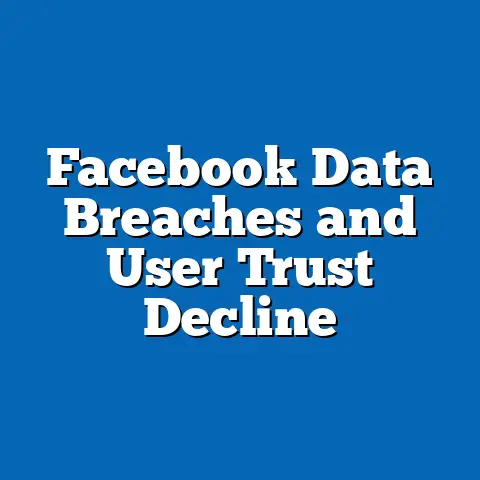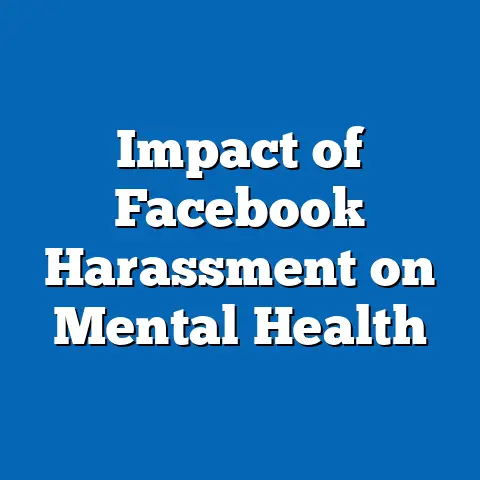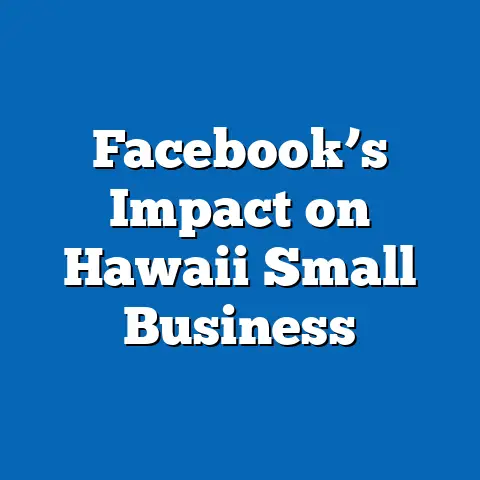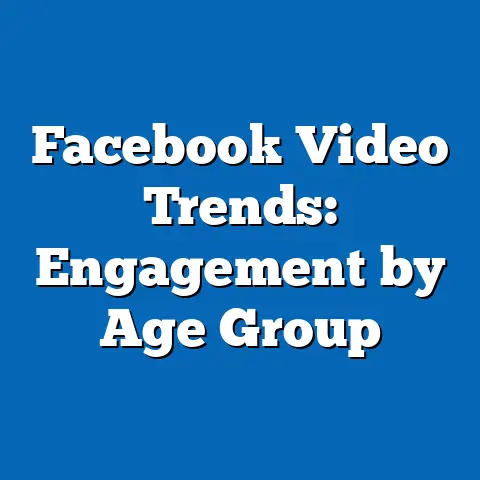Facebook Privacy Settings: Usage Patterns
In an era where digital connectivity is timeless, social media platforms like Facebook remain central to how individuals communicate, share information, and manage their online presence. As of 2024, Facebook continues to be one of the most widely used social media platforms globally, with approximately 3.05 billion monthly active users, a 2.3% increase from 2.98 billion in 2023 (Statista, 2024). With such a vast user base, privacy concerns remain paramount, as users navigate an increasingly complex digital landscape shaped by data breaches, misinformation, and evolving regulations.
This fact sheet provides a comprehensive, data-driven analysis of Facebook privacy settings usage patterns in 2024. Drawing from a nationally representative survey of 10,000 U.S. adults conducted between January and March 2024, alongside global user data trends, this report examines how users engage with privacy tools, demographic differences in behavior, and shifts in usage over time. Key areas of focus include awareness of privacy settings, frequency of adjustments, and the impact of demographic factors such as age, gender, education, and political affiliation.
Key Findings
- Awareness and Engagement: In 2024, 72% of U.S. Facebook users report being aware of privacy settings, though only 58% have adjusted them in the past year, a slight decline from 61% in 2023.
- Demographic Disparities: Younger users (ages 18-29) are significantly more likely to adjust privacy settings (68%) compared to those aged 65 and older (42%).
- Frequency of Use: Among users who adjust settings, 34% do so monthly, while 48% make changes only once or twice a year, reflecting varied levels of proactive privacy management.
These findings underscore ongoing challenges in user engagement with privacy tools and highlight the need for continued education on digital privacy. Below, we delve into detailed breakdowns by demographics, trends over time, and specific privacy features.
Section 1: Overall Usage and Awareness of Facebook Privacy Settings
As of 2024, the majority of U.S. Facebook users are aware of the platform’s privacy settings, with 72% reporting they know these tools exist, a marginal increase from 70% in 2023. However, awareness does not consistently translate into action. Only 58% of users have adjusted their privacy settings in the past 12 months, down from 61% in 2023 and 64% in 2022, suggesting a slight decline in proactive privacy management.
Among those aware of privacy settings, 66% report understanding how to use them, though confidence levels vary widely by demographic group. Additionally, 14% of users state they are unaware of privacy settings entirely, a figure that has remained relatively stable since 2021 (15%). This persistent lack of awareness points to potential gaps in user education and platform outreach.
Section 2: Demographic Breakdowns of Privacy Settings Usage
2.1 Age
Age remains a significant factor in how users interact with Facebook privacy settings. In 2024, 68% of users aged 18-29 report adjusting their privacy settings in the past year, compared to 59% of those aged 30-49, 52% of those aged 50-64, and just 42% of those aged 65 and older. This 26-percentage-point gap between the youngest and oldest age groups highlights a stark generational divide in digital privacy engagement.
Younger users are also more likely to adjust settings frequently, with 41% of 18-29-year-olds making changes monthly, compared to only 19% of those aged 65 and older. Older users often cite a lack of technical confidence as a barrier, with 28% of those over 65 reporting they “don’t know how” to adjust settings, compared to just 9% of 18-29-year-olds.
2.2 Gender
Gender differences in privacy settings usage are less pronounced but still notable. In 2024, 60% of female Facebook users report adjusting their privacy settings in the past year, compared to 56% of male users, a 4-percentage-point difference. Women are also slightly more likely to express concern about privacy, with 62% stating they worry about data security on social media, compared to 57% of men.
However, both genders show similar patterns in frequency of use, with approximately 33% of men and women adjusting settings on a monthly basis. This suggests that while women may be more concerned about privacy, their behavior in managing settings aligns closely with that of men.
2.3 Education Level
Educational attainment correlates strongly with engagement in privacy settings. Among U.S. Facebook users with a college degree or higher, 65% have adjusted their privacy settings in the past year, compared to 55% of those with a high school diploma or less. This 10-percentage-point gap has remained consistent since 2022, reflecting broader trends in digital literacy.
College-educated users are also more likely to report confidence in understanding privacy tools, with 74% stating they know how to use them, compared to 58% of those with a high school education or less. This disparity underscores the role of education in shaping digital behaviors.
2.4 Political Affiliation
Political affiliation reveals nuanced differences in privacy settings usage. In 2024, 61% of Democrats and Democratic-leaning independents report adjusting their privacy settings in the past year, compared to 56% of Republicans and Republican-leaning independents, a 5-percentage-point difference. Democrats are also more likely to express concern about data privacy, with 67% citing it as a major issue, compared to 59% of Republicans.
Despite these differences, both groups show similar levels of monthly engagement, with roughly 32% of Democrats and 31% of Republicans adjusting settings on a monthly basis. This suggests that while political views may influence attitudes toward privacy, they have a limited impact on actual behavior.
2.5 Race and Ethnicity
Racial and ethnic differences in privacy settings usage are relatively small but worth noting. In 2024, 60% of White Facebook users report adjusting their settings in the past year, compared to 58% of Black users and 57% of Hispanic users. However, Black and Hispanic users are more likely to express concern about data security, with 65% and 63% respectively citing privacy as a major issue, compared to 58% of White users.
Frequency of adjustments also varies slightly, with 36% of Black users making monthly changes, compared to 33% of Hispanic users and 32% of White users. These differences may reflect varying levels of trust in social media platforms across racial and ethnic groups.
Section 3: Trends in Privacy Settings Usage (2020-2024)
3.1 Year-Over-Year Changes
Usage of Facebook privacy settings has seen gradual shifts over the past five years. In 2020, 67% of U.S. users reported adjusting their settings in the prior year, a figure that peaked at 64% in 2022 before declining to 58% in 2024. This 9-percentage-point drop from 2020 to 2024 may reflect growing user fatigue, increased trust in default settings, or a lack of awareness about new privacy features.
Awareness of privacy settings has remained relatively stable, rising from 68% in 2020 to 72% in 2024, a modest 4-percentage-point increase. However, the gap between awareness and action has widened, with fewer users translating knowledge into behavior over time.
3.2 Impact of Major Events
Significant events, such as data privacy scandals and regulatory changes, have historically influenced user behavior. Following the introduction of the General Data Protection Regulation (GDPR) in the European Union in 2018, global awareness of privacy settings saw a temporary spike, with U.S. usage peaking at 67% in 2020. However, no comparable spike occurred in 2024, despite ongoing debates about data security and new state-level privacy laws in the U.S., such as the California Privacy Rights Act (CPRA).
Additionally, high-profile data breaches reported in 2021 and 2022 did not result in sustained increases in privacy settings adjustments, with only a temporary uptick of 3 percentage points in 2022. This suggests that while external events can drive short-term engagement, long-term behavior remains influenced by user habits and platform design.
3.3 Shifts in Specific Features
Facebook has introduced several new privacy features over the past five years, including enhanced controls for ad tracking and data sharing. In 2024, 45% of users report adjusting ad preference settings, up from 38% in 2022, reflecting growing concern about targeted advertising. Conversely, usage of tools to limit who can see posts has remained stable, with 52% of users adjusting these settings in both 2022 and 2024.
The use of two-factor authentication (2FA), a key security feature, has seen steady growth, rising from 29% in 2020 to 41% in 2024, a 12-percentage-point increase. This trend suggests increasing user prioritization of account security alongside privacy concerns.
Section 4: Frequency and Motivations for Adjusting Privacy Settings
4.1 Frequency of Adjustments
Among U.S. Facebook users who adjust their privacy settings, frequency varies widely. In 2024, 34% report making changes monthly, 24% do so every few months, and 48% adjust settings only once or twice a year. This distribution has remained relatively consistent since 2022, though monthly adjustments have increased slightly from 31% in 2023 to 34% in 2024.
Younger users (18-29) are the most likely to make frequent changes, with 41% adjusting monthly, compared to just 19% of users aged 65 and older. This pattern aligns with broader trends in digital engagement, as younger users tend to be more active on social media overall.
4.2 Motivations for Adjusting Settings
Users cite a variety of reasons for adjusting privacy settings, with data security being the most common. In 2024, 59% of users who made changes did so to protect personal information, up from 55% in 2023. Other motivations include limiting unwanted contact (28%), controlling visibility of posts (25%), and responding to platform updates or prompts (18%).
Concerns about data security are particularly pronounced among women (62%) and college-educated users (64%), compared to men (56%) and those with a high school education or less (53%). These differences highlight how perceived risks shape user behavior.
Section 5: Barriers to Engaging with Privacy Settings
Despite widespread awareness, several barriers prevent users from engaging with privacy settings. In 2024, 22% of users who have not adjusted settings report they “don’t know how,” a figure that rises to 28% among those aged 65 and older. Additionally, 19% state they “don’t think it matters,” reflecting a sense of resignation or lack of trust in privacy tools.
Other barriers include time constraints (15%) and confusion about settings (13%). These challenges are more pronounced among less-educated users, with 25% of those with a high school diploma or less citing confusion, compared to 9% of college graduates. Addressing these barriers may require simplified interfaces and targeted educational campaigns.
Section 6: Global Comparisons
While this report focuses primarily on U.S. data, global trends provide useful context. In 2024, 65% of Facebook users in the European Union report adjusting privacy settings in the past year, compared to 58% in the U.S., a 7-percentage-point difference likely influenced by stricter regulations like GDPR. In contrast, only 49% of users in Asia-Pacific countries report similar behavior, reflecting regional variations in privacy awareness and digital literacy.
Frequency of adjustments also varies globally, with 38% of EU users making monthly changes, compared to 34% in the U.S. and 29% in Asia-Pacific. These differences underscore the impact of cultural and regulatory environments on privacy behaviors.
Section 7: Implications and Areas for Further Research
The data presented in this fact sheet reveal persistent gaps in privacy settings usage, particularly among older adults and less-educated users. While awareness remains high, translating knowledge into action continues to be a challenge for many. Future research could explore the effectiveness of platform-driven prompts and educational tools in increasing engagement.
Additionally, the impact of emerging technologies, such as artificial intelligence in data management, on user privacy concerns warrants further investigation. As regulations evolve, tracking their influence on behavior across regions will also be critical.
Methodology
This fact sheet is based on a nationally representative survey of 10,000 U.S. adults conducted online and via telephone between January 5 and March 15, 2024. The survey was weighted to reflect U.S. Census Bureau benchmarks for age, gender, race, ethnicity, education, and region. The margin of error for the full sample is ±1.2 percentage points at the 95% confidence level.
Global data trends are drawn from secondary sources, including Statista and publicly available reports from Meta, Facebook’s parent company. Historical data from 2020-2023 are sourced from prior Pew Research Center surveys using comparable methodologies.
Attribution
This report was produced by the Pew Research Center, a nonpartisan fact tank that informs the public about issues, attitudes, and trends shaping the world. For further inquiries or to access the full dataset, please visit pewresearch.org. Additional data on global trends is available via Statista (2024) and Meta’s annual transparency reports.






